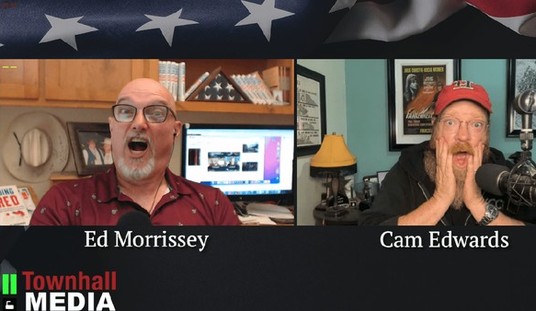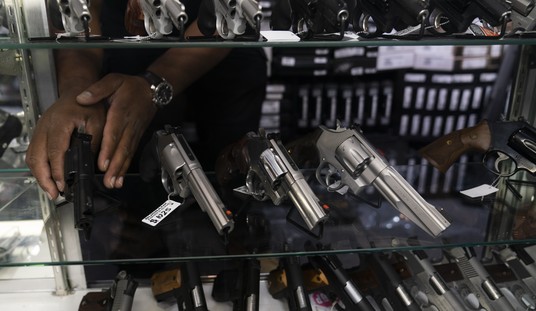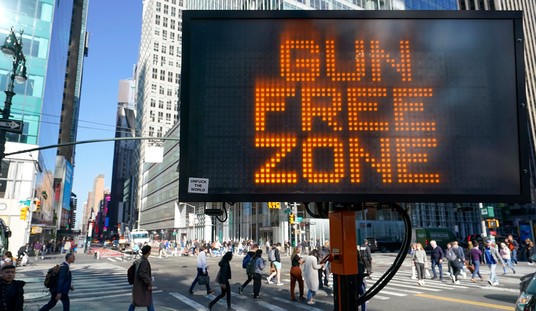The new District Attorney in Queens, New York is vowing to use the state’s new “red flag” law to reduce homicides, but there’s little evidence that the law is actually effective at preventing murders or other violent crimes. Melinda Katz says shootings are increasing this year in the borough of New York City, and she believes the Extreme Risk Protection Orders will help bring the numbers down.
New York State recently joined the ranks of states with so-called red flag laws or Extreme Risk Protection Orders. The law wisely allows family members, members of law enforcement including district attorneys and school officials to seek a court petition to temporarily seize the firearms of individuals deemed a threat to themselves or others.
Unfortunately, just 17 states and the District of Columbia have enacted such laws to date — even though the National Rifle Association duplicitously refuses to endorse red flag laws while stating, “those who have been adjudicated as a danger to themselves or others should not have access to firearms and should be admitted for treatment.”
Red flag laws/Extreme Risk Protection Orders are just plain common sense — particularly as the death tolls continue to mount from shooting rampages. In September, just weeks after the new law took effect, an upstate man became the first in the state to have his guns confiscated after he was arrested for shooting a pistol at a parked car and telling authorities he planned to harm himself.
Yes, the NRA talks about those being a danger to themselves or others being “admitted for treatment,” which isn’t a part of New York’s red flag law. In fact, under New York’s red flag law, that man upstate would have had his guns taken from him, but even after telling officers he planned to harm himself, there would be no mental health help provided. New York does have a civil commitment law, but when a judge signs off on a red flag firearms seizure, there’s no guarantee or mandate to provide any sort of mental health services or even an evaluation.
I will act quickly to establish ongoing training sessions on how to use the law, led by my office with law enforcement, school officials, domestic violence advocates and community groups. Judges are only permitted to rule to take an individual’s guns after being presented with compelling evidence.
“Compelling evidence” of what exactly? Individuals can have their guns taken from them without ever having been accused of a crime, and the order can be given without the individual ever having an opportunity to testify in their own defense.
Speaking of compelling evidence, does Katz have any evidence that New York’s red flag law will reduce homicides as she claims? If she does, I’m sure researchers would love to talk with her, because they haven’t found any link.
While many states have passed “red flag” gun laws in the aftermath of mass shootings, there is no data to support that they reduce homicides, experts say.
“Red flag” laws allow guns to be temporarily taken away from individuals who may be dangerous to themselves or others.
“Every state that’s put a “red flag” law on the books has done so in response to a homicide, usually a mass homicide,” said Aaron Kivisto, associate professor of clinical psychology at the University of Indianapolis. “And to date, we have no research that has looked at whether these laws have any effect on homicide let alone mass homicide.”
There have been studies that indicate gun-related suicides decreased in Indiana and Connecticut after red flag laws were implemented, but the overall suicide rate still increased in both states. If the goal is to save lives, red flag laws don’t seem to be the best way to go about it.
As of early November, there were only 129 active red flag orders in place in New York State, with the bulk of them being issued in Suffolk County on Long Island. Interestingly, in upstate New York, one local prosecutor has rejected several requests, and a judge denied another.
Since August 24, [Erie County District Attorney John] Flynn said four Red Flag cases have crossed his desk with only one reaching a judge.
“The law enforcement agency, they wanted to do it,” he said. “I personally thought that it was a weak case. I said to myself I doubt the judge is going to grant this.”
The judge rejected that petition but gun rights advocates argue the person in question was not afforded due process. They also said infrequent enforcement does not mean it’s a good law.
“When you have somebody who’s in a pro-gun area, yes there’s not a problem,” Nick Massal, SCOPE president, said. “What happens when you get an anti-gun district attorney that takes every one of these and decides to put it to court.”
That’s exactly right, and unfortunately judges have every reason to approve every proposal that comes before them. Who wants to be the judge to say “no” to a red flag request, only to see the individual who kept their guns use them in a suicide or a violent crime? It may be one reason why approval rates for red flag firearm seizure applications are as high as 95% in states like Florida. Even in states like Maryland, as Reason‘s Jacob Sullum notes, where almost anybody can petition the court to seize someone’s firearms, almost 2/3rds of red flag applications are approved.
The bottom line is that while Melinda Katz, the new DA in Queens says she’ll bring down homicides with the help of the state’s red flag law, there’s no evidence that the law will be of any use. Gangs and drugs are driving homicides in Queens, and most of those guns are illegally possessed to begin with. A red flag law isn’t going to be of any use against gang violence, but clearly Katz thinks it will help her look like she’s “doing something” to tackle the growing violence in her community.










